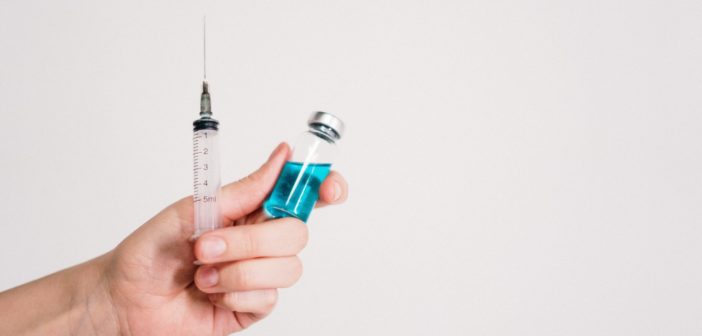By: Reid Griffin, Contributing Writer
Dr. John Torres, NBC News’ Medical Correspondent, estimates that the general population may have access to a vaccine in April.
This is good news, especially for the United States. Dr. Paul Offit, a specialist in immunology and virology, shared a grim statistic with Slate: the U.S. has 4 percent of the world’s population but 25 percent of the world’s deaths.
President Donald Trump identified COVID-19 as a lethal airborne virus in an interview with reporter Bob Woodard, but his Twitter account regularly downplayed the pandemic, according to NPR. With a quarter of reported mortalities, the U.S. response to the pandemic has been a catastrophic failure.
In April, Pfizer Inc., partnered with BioNTech, began Phase I research on a vaccine. At the end of Phase III in November, their data on the vaccine reflected a 95 percent efficacy rate. Pfizer Inc. shared their intentions of requesting Emergency Use Authorization (EUA) from the FDA on Nov. 20.
According to STATNews, Pfizer’s vaccine trials had a total of 43,661 volunteers. 162 participants in the placebo group contracted COVID-19, while only eight of the participants in the vaccine group contracted COVID-19. Nine of the placebo cases were severe, only one of the vaccine cases was severe, suggesting that even when the vaccine fails to prevent infection, it still acts as a buffer against devastating illness.
Pfizer and BioNTech are not alone in their success—Moderna reported a 94.5 percent efficiency rate against COVID-19. The effectiveness of Pfizer and Moderna’s vaccine candidates are a mere 0.5 percent apart.
Dr. Cheryl Kozina, a biology professor at Saint Leo University, is no stranger to clinical research. She explained the Phase II studies are primarily for safety, and the Phase III studies are for efficacy. If the rush for distribution has any negative impacts, it is more likely to lower efficacy than safety.
“At this point, it hasn’t been peer-reviewed,” Kozina said. “But considering that Pfizer and Moderna are both within a couple of percentage points of another and using the same approach [to fight the virus], that does seem to support each other’s data.”
Most COVID-19 vaccines are mRNA vaccines, Pfizer and Moderna included. mRNA vaccines teach the body’s white blood cells to identify and destroy genetic material belonging to the target virus.
The CDC explains that the body’s immune system response involves three white blood cells: macrophages, B-Lymphocytes, and T-Lymphocytes. When infected, the body spends days to weeks creating and then deploying these cells. The body keeps some of the T-lymphocytes and B-lymphocytes as “memory cells,” deploying them upon reinfection.
Kozina explained that, unlike other vaccines that typically involve weakened forms of the virus itself, there is no chance of a live virus making its way into an mRNA vaccine.
“There are only instructions for that spike protein,” she said.
It is impossible to contract COVID-19 from Pfizer and Moderna’s vaccine candidates. People can, however, have an immune reaction to the vaccine. STATNews reports Pfizer’s volunteers reported side effects such as fatigue and headache.
Kozina stressed that these side effects are a good sign.
“It’s two shots, so you can’t get scared off by that first shot and the reaction,” she said.
She also suggested paid time off for employees receiving the vaccine in case of severe side effects. Fatigue and headaches for a day or so are far preferable to the risk of lifelong damage from the COVID-19 virus.
Offit informed Slate Magazine that even vaccinated individuals must follow CDC guidelines. The vaccine is not magic—the eight cases in vaccinated volunteers, one severe, reflect its room for error. Social distancing, masking, and handwashing combined with vaccination, Offit says, will be close to 100 percent effective.
The genetic material of a virus must be familiar enough to trigger an immune response. There have been confirmed cases of reinfection of the coronavirus, says Science Magazine, implying mutations in the virus.
“It is going to mutate,” Kozina confirmed. “We hope it mutates slowly and that that gives us time to create another vaccine, and it may be that this becomes like a new type of flu where you have to get a shot every year.”
No matter how effective the vaccine, human error compromises its effectiveness. The Saint Leo Polling Institute reports 67.2 percent of Floridians are willing to get the COVID-19 vaccine once it is approved—5.1 percent points higher than the national average. Over 40 percent of Americans may not want to be vaccinated.
In 2016, the Pan American Health Organization (PAHO) declared measles eradicated. Unfortunately, the CDC reported outbreaks of the deadly disease every year since. If a significant percentage of the population refuses COVID-19 vaccinations, everyone will suffer the consequences.
Kozina shares the cautious optimism of public health officials such as Dr. Anthony Fauci, but she also gave a warning to those who may reject the vaccine.
“You don’t speak for everyone. You don’t speak for the uninsured, for the underinsured, for the unemployed. This is public health,” said Kozina.





